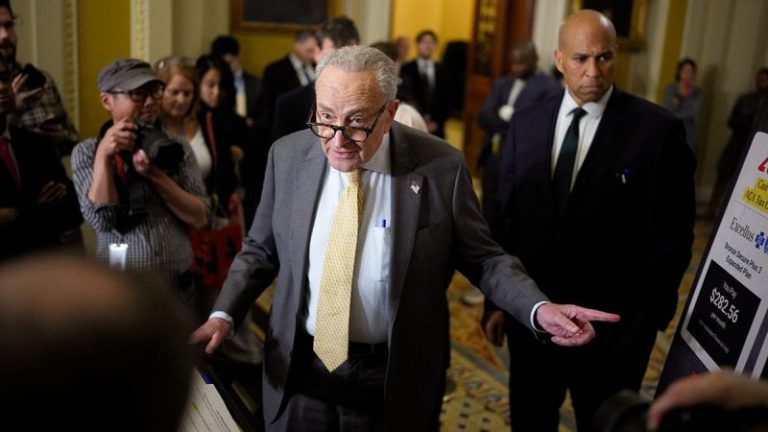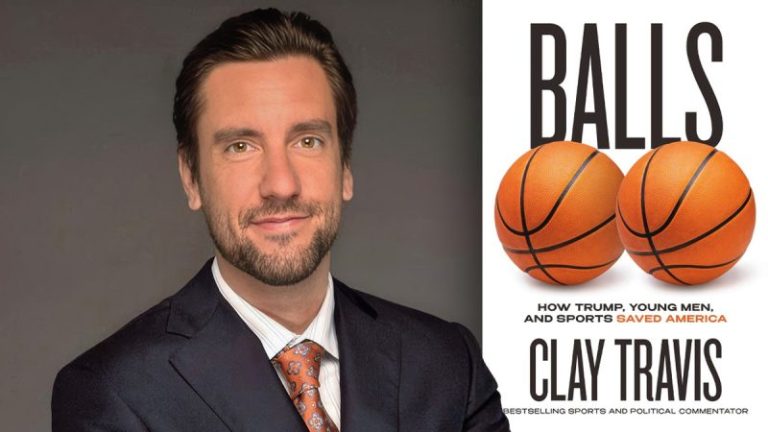New York Democrats embraced socialism when they elected Zohran Mamdani to lead the nation’s largest city, but the verdict is still out on whether New York City’s shift to the left is an outlier or the beginning of a broader political realignment.
From California’s redistricting success to gubernatorial races in Virginia and New Jersey, Democrats dominated the most closely watched contests of 2025 – results that could be considered a referendum on President Donald Trump’s sweeping, second-term agenda.
As Mamdani rises to political fame, a slate of fellow progressives are vying to ensure that his victory signals the beginning of a new era in progressive politics.
Aftyn Behn
Aftyn Behn, a former healthcare community organizer and current Democrat state representative, recently secured the Democratic nomination to represent Tennessee’s 7th Congressional District.
The Dickson County Democratic Party described Behn as ‘our very own AOC of TN,’ referring to ‘Squad’ member Rep. Alexandria Ocasio-Cortez, D-N.Y., according to The Tennessee Star.
On her campaign website, Behn describes herself as a ‘pissed-off social worker’ who was inspired to run for the House of Representatives after Congress passed Trump’s One Big Beautiful Bill Act earlier this year.
Behn is running in Tennessee’s special election on Dec. 2 to replace Rep. Mark Green, R-Tenn., who retired from Congress earlier this year.
Kat Abughazaleh
Kat Abughazaleh, 26, is the progressive Gen Z candidate running for Illinois’ 9th Congressional District next year.
She was indicted on federal charges in October after protesters allegedly attacked an Immigration and Customs Enforcement (ICE) vehicle outside a Chicago suburb facility in September.
Viral videos of Abughazaleh obstructing the ICE vehicle and being shoved the ground by an agent outside the Broadview ICE facility on Sept. 19 became flash points in the divisive debate over Trump’s deportation rollout.
Abughazaleh is a former journalist and activist who frequents protests outside the ICE facility in Broadview, Illinois.
She has accused Homeland Security Secretary Kristi Noem of perpetrating ‘crimes against humanity.’
Abughazaleh garnered national attention earlier this year for questioning why it’s controversial that illegal immigrants should have access to taxpayer-funded healthcare.
‘I don’t have health insurance, and I’m running for Congress,’ the young progressive’s campaign website reads.
Saikat Chakrabarti
Saikat Chakrabarti arrived on the political scene during the rise of the ‘Squad,’ running Ocasio-Cortez’s successful 2018 congressional campaign and then serving as her chief of staff.
The progressive met Ocasio-Cortez when he launched ‘Justice Democrats,’ a political action committee committed to recruiting a new generation of leaders.
Now, Chakrabarti has become the generational candidate himself. Earlier this year, he announced his campaign to challenge House Speaker Emerita Nancy Pelosi for her congressional district in San Francisco.
On Thursday, Pelosi announced her intention to retire from Congress at the end of next year, teeing up an already competitive Democratic primary expected with state Sen. Scott Wiener also in the race to replace Pelosi.
Chakrabarti said it was time for ‘totally new leadership’ in Washington, D.C.
His policy platform includes a long list of progressive promises, including Medicare for All, a wealth tax on the ultra-rich, millions of units of housing, a ban on congressional stock trading and an end to military funding to Israel.
During a phone interview, Chakrabarti told Fox News Digital that his main focus is fixing the ‘underlying economic anxieties that most Americans are facing’ — the same ‘plan for bold, sweeping economic change’ that landed Trump back in the White House last year and was successful for Mamdani this year.
Chakrabarti’s said a new generation of candidates, like himself, have been inspired to run since witnessing ‘the complete failure of the Democratic political establishment.’
‘I think the people are feeling that the Democratic Party, the establishment, is just sort of weak and slow moving and unable to face the moment,’ he added.
Chakrabarti’s first campaign commitment, according to his website, is to stop Trump’s ‘authoritarian coup.’
The congressional candidate described Trump’s ICE-led deportation rollout as ‘a flagrant violation of our constitutional rights and the freedom of speech and everything we hold dear in this country.’
When asked if the party is moving to the left in response to Trump’s second term, he said, ‘It’s not really a left versus right thing.’
‘I think people are looking for real solutions to the problems. People are looking for a change to the system, and I don’t think Donald Trump is doing it, but that’s what Donald Trump articulated in his campaign.’
Overall, Chakrabarti said voters are ‘very sick and tired of corruption’ and the ‘old guard’ that he described as only looking out for themselves, rather than their constituents.
Chakrabarti congratulated Mamdani’s win in a social media post on Tuesday, telling his followers that Mamdani won because he stood for ‘real, bold change.’
‘That’s what we’re doing here in San Francisco,’ Chakrabarti said, comparing his own campaign to Mamdani’s.
Dr. Abdul El-Sayed
Dr. Abdul El-Sayed is one of several progressive candidates vying for Michigan’s open U.S. Senate seat next year.
‘Abdul literally wrote the book on Medicare for All,’ according to his campaign website. He wrote ‘Medicare for All: A Citizen’s Guide,’ explaining how the U.S. healthcare system can provide affordable care to all Americans.
El-Sayed led Detroit’s Health Department after its bankruptcy and restructured Wayne County’s Department of Health, Human & Veterans Services. In 2020, he helped President Joe Biden craft policies to help lower prescription drug prices.
He believes in abolishing medical debt and that students deserve debt-free and tuition-free two-year apprenticeship programs or a four-year college education.
Abdul El-Sayed celebrated Mamdani’s success on social media this week, when he wrote, ‘Yesterday, voters reminded us how big America can be.’
Graham Platner
Graham Platner is challenging Sen. Susan Collins, R-Maine, in 2026. He is a Marine and a U.S. Army veteran and an oyster farmer.
On Nov. 4, he said he would not be mourning the death of former Vice President Dick Cheney.
‘As a veteran of the Iraq war, I am going to say: No, not this time.’
Between 2020 and 2021, Platner posted and has since deleted Reddit posts calling himself a ‘communist,’ which he recently said he was ‘joking’ about.
Platner has faced calls for him to drop out of the Senate race, and a top campaign staffer resigned after he faced backlash for photos revealing that he had a tattoo resembling the Totenkopf used by Hitler’s SS paramilitary forces.
According to his website, among his campaign promises, Platner supports Medicare for All and ‘a clear-eyed condemnation of the Gaza genocide.’
Fox News Digital reached out to Behn, Abughazaleh and Platner for comment but did not immediately receive a response.
Fox News Digital’s Anders Hagstrom contributed to this report.










